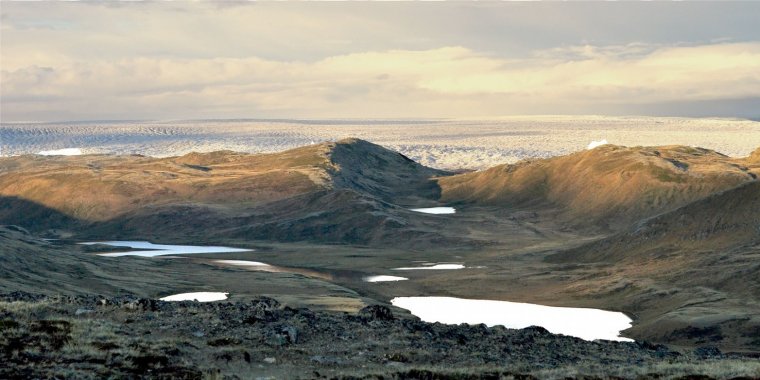| News / Science News |
Study finds mercury levels in Arctic soils 5 times higher than temperate regions
Plants and soil in the Arctic tundra absorb and store mercury released into the atmosphere by industry and mining in the Earth's temperate regions, leading to soil mercury levels five times higher than in lower latitudes.

Greenland tundra near the ice sheet. ![]()
An international team of researchers from the U.S. and France used a combination of methods to monitor the accumulation of mercury from the atmosphere, performing continuous sampling over a two-year period, including through the Arctic winter.
They concluded that the Arctic tundra is a major "sink" for mercury, a toxin that affects the neurological and immune systems of Arctic wildlife and is passed along to indigenous peoples who rely on subsistence hunting for their food. Studies have shown that mercury ingested by mothers can also have detrimental effects on unborn children.
Between one-third and one-half of all mercury stored in global soils -- much of it likely from the burning of coal and other sources -- is stored in tundra soils.
The results indicate that mercury has accumulated for thousands of years in tundra soils. As the Arctic warms, this mercury could be released into rivers and streams and transported into the oceans.
The majority of the mercury -- 70 percent -- found in the Arctic does not come from rain or snow, but in a gaseous form. This allows it to travel long distances across the global atmosphere.
It's a process similar to the uptake of carbon dioxide, whereby plants absorb gaseous mercury from the atmosphere and as they shed their leaves or die off, this mercury deposits to the tundra.
The researchers added that their findings explain the strong effects of human-caused emissions in the Arctic, even though those sources of mercury are, for the most part, located in the lower latitudes.
The researchers noted that previous measurements indicate the amount of mercury in sediments at the bottom of Arctic lakes has increased three to five times since the Industrial Revolution began, which is similar to levels found in lake sediments at lower latitudes.
As a result, Arctic absorption of mercury indicates that the region will continue to serve as a global sink of mercury emitted elsewhere in the globe. Further emissions, even those from far away will continue to affect arctic wildlife and people. (National Science Foundation)
YOU MAY ALSO LIKE




